"Round table" on the problems of the Caspian Sea in the editorial office of "Xalq newspaper"
Our guests at the "round table" organized in our editorial office on the problems of the Caspian Sea were: Professor Shovgi Goychayski, employee of the Department of Geographical Ecology of Baku State University, Doctor of Geography, Head of the Department of Ecogeography of the ETN Institute of Geography, Doctor of Geography, Associate Professor Anvar Aliyev, Head of the Department of the Institute, Doctor of Geography, Professor Amir Aliyev, Director of the "Iglim" Research and Consulting Center, Doctor of Philosophy in Geography Mirzakhan Mansimov, Director of Khazar University Ecological Research Center, Doctor of Philosophy in Geography, Associate Professor, Member of the Public Council under the Ministry of Ecology Rovshan Abbasov and ETN Geography Said Safarov, the head of department of the institute, doctor of geography sciences.
The editor-in-chief of "Xalq newspaper" Aflatun AMASHOV welcomed the guests and said that great attention is paid to the protection of existing ecological systems and efficient use of natural resources in Azerbaijan. In order for socio-economic development to be sustainable from an ecological point of view, special importance is given to the elimination of serious environmental problems that arise during economic activity, to the minimization of their negative impact on the environment, and projects aimed at improving the ecological situation, in the direction of cleaning and drying lakes polluted by oil and sewage around the capital sustainable projects are implemented.
Although a large part of the listed environmental problems have been eliminated, a number of shortcomings are still noticeable in this area. Here, pollution of the Caspian Sea, coastal areas, and problems related to the protection of biodiversity in the waters are of serious concern. So, now the pollution of the sea attracts more attention, and the main reason for this is the pollution coming from land or as a result of activities carried out on land.
Aflatun AMASHOV then said:
- The largest waste water enters the Caspian Sea through rivers, and at the same time, pollution occurs in the coastal areas as a result of economic activity and household waste. For example, materials are regularly published in the media about the negative activities of Armenia in the current field. The way out of this, in my opinion, is to prevent the discharge of untreated waste water into the Caspian Sea with the joint efforts of coastal countries and to ensure that waste water is treated in accordance with relevant standards in treatment facilities.
The editor-in-chief invited the guests to a business-like and productive discussion and emphasized that publishing articles with a separate section on the issues of the Caspian Sea, as well as the implementation of environmental projects, as well as all areas of the socio-economic, socio-political life of the country, is a priority direction in the editor's activity. Today's "round table" is a kind of continuation of that series.
Question: - Among the problems of the Caspian Sea, along with the fluctuation of the level, the pollution of the sea waters and the deterioration of the environmental conditions related to it are the most important problems of the last period. What can you say about it?
Shovgi GOYCHAYSKI, professor of the department of geographical ecology of Baku State University:
- Mr. Aflatun, I would like to thank you for continuing the "round table" tradition on various topics. Many years ago, I participated in such events organized by this newspaper together with the Scientific-Public Union established at Baku State University and attended by representatives of scientific-research institutes and various state institutions. By the way, at one of those "round tables", the final provisions were presented to the Cabinet of Ministers after examining the solution to the problem of drinking water in Azerbaijani cities. In 1991, at the meeting of the government regarding the mentioned issue, 5 of the theses-clauses of the editors regarding the existing problem were taken into account and added to the general final document. Thus, collecting underground drinking water in a network and distributing it to the population was presented to the public through "Communist" and now "Khalq newspaper" as one of the options at that time. During the period when the national leader led Azerbaijan, the problem of drinking water was solved in more optimal ways.
The topic to be discussed at today's "round table" is also noteworthy for its relevance. The presented questions reflect the important issues that resonate with today's challenges, such as water level fluctuations in the Caspian Sea, pollution of coastal areas, protection of biodiversity in waters.
I will not go into details about the fluctuations of the level of the Caspian Sea. Because today's event is attended by specialists in this field. They will tell you more about it. I want to focus on one fact. Concerns about the pollution of the Caspian Sea have been increasing in recent years. A lot is written and talked about. I would like to note that the Caspian is also polluted through the coastal countries and the rivers forming its course. At this time, an important issue is being forgotten. The issue is that a little less than 80 percent of the water supply of the Caspian Sea, a little more, falls on the Volga River. Moreover, it is noted that the Caspian Sea is polluted both naturally and anthropogenically. Natural pollution refers mainly to climate change. A lot is written about this. As for anthropogenic pollution, there is no explanation. It is only known that anthropogenic impact is caused by human activity. This is not analyzed in detail. If we talk about anthropogenic influence, the entire 1.4 million square kilometers of the Volga basin is under anthropogenic influence.
In addition, the rivers flowing from all the Caspian countries are also affected. I believe that the level of anthropogenic influence of the Caspian Sea should be clarified. After that, we can determine the natural background of pollution.
Currently, there are 9 large reservoirs on the Volga River. For the first time, in the 1950s, when reservoirs were being built, nobody thought about ecology and climate change. During the construction of reservoirs, river beds were expanded 15-20 times and more. At that time, the climate was different from today, and the temperatures were not at this level. Due to warming, evaporation in the Caspian Sea, as well as in all rivers of the basin, has increased significantly.
The reduction of water in the Volga River, which brings more water to the Caspian Sea, and its level of pollution are also clearly felt. This means that the influence of the Volga River on the reduction of the Caspian water and its pollution is greater. Because at first, the river passes through 4 economic regions of Russia, and waste water from those areas is discharged into the Volga. According to calculations, 60 percent of the 40-45 cubic kilometers of waste water that enters the Caspian Sea every year falls to this river. Secondly, several huge reservoirs built by the neighboring country in the 50s of the last century expand the Volga's deposits, and as a result, this affects the fluctuations in the level of the Caspian Sea.
Anvar ALIYEV, head of department of ETN Institute of Geography, doctor of geography sciences, associate professor:
- The Caspian Sea was formed 200 million years ago. The level limit of the sea is as old as itself. The change of the level amplitude occurs every 30-50 years. Now the Caspian Sea is at a low level.
During the Soviet period, it was decided to solve the problem of lowering the sea level by draining the water of the northern rivers into the Caspian Sea. The decrease and increase of its level is associated with two reasons - climate and tectonic events. In the current case, the 114-centimeter drop of the sea level in the last 10 years has not alarmed any of the Caspian countries, because it is not a dangerous limit at the moment. Against the background of the reduction of the water level to today, along with the reduction of feed and food, the evaporation surface also increases. This situation reduces the number of fish and damages fishing. The fluctuation of the level of the Caspian Sea has always been a topic of discussion. In general, different opinions on this issue have been voiced since the inception of the said sea. That is, it is common for the water level in the Caspian Sea to be lower or higher at certain times. The ups and downs in the Caspian Sea continue. This, as I mentioned, is typical. True, this issue is evaluated differently. In the history of the Caspian Sea, its descent to the most turbulent level occurred in the 1970s - during the Soviet era. At that time, the Karabogazgol bay in Turkmenistan was also closed. Technical salts were formed as a result of evaporation through this gulf. In addition, there was a plan to divert the northern rivers to the Caspian Sea. Later, this plan did not materialize as the water level rose again.
In the 70s of the last century, the repeated rise of the water level in the Caspian Sea caused certain problems. For example, many people probably remember well: a certain part of the railway line passing near the sea in the southern region was under water. In addition, many agricultural lands on the coast of the Caspian Sea, including areas suitable for animal husbandry, faced such a threat.
Currently, the process of lowering the water level in the Caspian Sea is noticeable. This is justified by various factors. At the same time, it is not known how long the process will last.
Amir ALIYEV, head of department of ETN Institute of Geography, doctor of geography sciences, professor:
- The biggest problem of the Caspian Sea in modern times is related to the change of its level. The main reason for this is that it is a closed water basin. That is, it has no direct connection with the ocean. Therefore, it is necessary to connect the change of the level of the Caspian directly with the climate. It is not for nothing that they say that the change in the level of the Caspian Sea is an indicator of the climate. Because climate changes in the region directly affect the Caspian Sea.
At present, waters enter the Caspian Sea from a total basin of 3.5 million square meters. 80 percent of the water that feeds the sea comes from rivers. 80 percent of it falls on the Volga and Ural rivers flowing from the north. It is precisely its water balance that changes the level of the Caspian Sea. Water balance refers to incoming and outgoing water. Since the Caspian Sea has no connection with the world ocean, all the water leaving here occurs due to evaporation.
Disturbance of the balance between the water entering the sea and the water evaporating, i.e. an increase of one and a decrease of the other, leads to level fluctuations. This process has been observed throughout history. For example, according to the information we have, certain changes have occurred in the level of the Caspian Sea during the last 4,000 years. That is, as a result of the process, 250 years of decrease and 250 years of increase were recorded. By the way, the last instrumental observations of the level of the Caspian Sea are the stoptan measurements made in Baku in 1837. All this information is stored in our institute. From those data, it is also clear that along with century-long changes in the level of the Caspian Sea, 30-year changes have also been recorded. These changes are related to the processes occurring in the Sun. Because the Sun is active in different periods. This process can continue for 11, 22 and 35 years. As for the rise and fall of the sea level, I would like to note that the amplitude of the level fluctuation here has mainly varied between 3-5 meters in the last 200 years.
The main reason for the lowering of the level of the Caspian Sea is primarily due to the decrease of water entering the sea. Thus, as a result of the conducted observations, it was determined that in recent years, the water of the Volga River, which is the main basin of the Caspian Sea, has decreased by approximately 30 percent. As it is known, the level of the Caspian Sea has undergone two major changes in recent years. The process that started in 1930 continued until 1977, and as a result, the sea level dropped by 3 meters. Since 1977, the process has continued in the opposite direction. As a result, the level of the Caspian Sea began to rise sharply. Thus, in 1995, an increase of 2.5 meters was recorded in the water level.
Since the end of the last century, the Caspian began to recede again. Currently, this process continues rapidly. The sea level has already dropped by 2 meters again. This is not the end. Observations show that this process will continue for another 30 years. Let me also say that in 1997 the level of the Caspian Sea was 60 centimeters lower than it is now. Apparently, there is no cause for serious concern in this matter. Because Caspian is a living organism. Its level can go down or up. Some claim that the sea level could drop by 10-18 meters. This does not reflect reality. It is absolutely impossible that the level of the Caspian Sea can undergo such a change.
The Caspian Sea has a very interesting structure and relief. As if the sea resembles two cups. One of them is located in the middle of the Caspian Sea, and the other is in the south. Their depth is 800-1000 meters respectively. In the north, the depth is 5 meters. Due to the influx of a lot of water into the Caspian Sea, those cups are filled. At this time, due to the inclination of the sea from the west to the east, approximately, 10-15 degrees, all these waters go towards the eastern shores. Here, due to strong evaporation, the sea level cannot rise much.
Mirzakhan MANSIMOV, Director of "Iglim" Research and Consulting Center, Doctor of Philosophy in Geography:
- I completely agree with Mr. Amir on the question of the hesitation of the Caspian Sea. The Caspian Sea seems to have its own laws. There will be a situation where there will be an equilibrium between the water entering the sea and the evaporation. Therefore, I think that there is no basis for what was said that the sea level will drop to 18 meters. It will take at least 200 years for the sea level to drop to this level, provided the Volga River dries up. This is not a possible issue.
Recently, the Caspian catchment basin - the Volga, Kura and Ural rivers - has been decreasing, which has caused the sea level to drop. If this reduction did not happen, the level of the Caspian Sea would be 1-2 meters higher than it is now. But in any case, water must be used, people must live, and countries must develop. This is natural. However, the issues of using water sparingly, cleaning and reusing recycled water are becoming more and more important.
Today, the ecological situation of the Caspian Sea is not so bad compared to the 70s of the last century. In the past period, both the convention was adopted and the technologies changed. Previously, the sea in our region was mainly polluted by oil. In terms of volume, the largest pollutants entered the Caspian Sea from the Volga River. The Ural, once considered a dead river, is now considered one of the cleanest water sources. As you can see, the issue is not so acute. Undoubtedly, when the water level increases, the ecological situation is better. Because the self-cleaning process of water is accelerated. Now there are two main problems in this area. The first is related to the fluctuation of the level of the Caspian Sea. Another problem is that we have lost our previous position regarding the Caspian Sea. In other words, in terms of researching the Caspian Sea, I think we are lagging behind all coastal states, except for Turkmenistan. Iran also surpassed us in this matter. In Kazakhstan and Russia, extensive studies, very good researches are conducted in this field, and valuable articles are written.
Now, from a global point of view, there was a very good idea in Soviet times to soften the fluctuation of the level of the Caspian Sea. According to that idea, the water shortage problem of the Central Asian republics and the Caucasus had to be solved. By the way, during the Soviet era, designers and researchers prepared a 50-volume document in this regard. Mikhail Gorbachev also approved this project when he was the first secretary of the Stavropol Territory. Even in 1984, a decision was made to resolve this issue. Unfortunately, during the leadership of Mikhail Gorbachev, the issue was forgotten and all work was stopped in 1986. I would suggest that this issue be brought up again.
Currently, due to population growth and industrial development in countries, the demand for water is increasing. So there will always be a demand. By taking and using water, we are also regulating it. In other words, taking water from rivers affects the sea level. In this way, it is possible to regulate the level of the Caspian Sea. I think that Caspian littoral countries should discuss this important issue together.
Said SAFAROV, head of department of ETN Institute of Geography, doctor of geographical sciences:
- Since it has no direct connection with the world ocean, the level of the Caspian Sea has been subject to constant fluctuations. The lowest sea level in the last millennium was in the 10th century, when the Caspian Sea was 35 meters below the ocean level. The highest level (22 meters below sea level) was recorded in the 14th and 18th centuries. Although the sea level increased in the following centuries, the amplitude of the centuries-old level fluctuations varied in the range of 2-4 meters.
Thus, the processes of lowering and rising of the level of the Caspian Sea have attracted attention at all times. In general, the sea level has been observed in a unique long-term period of change.
In the 20th century, sea level changes were sharp twice. In the period from 1930 to 1977, the level of the Caspian Sea dropped by 3 meters and reached the absolute minimum of the last 400 years (-29 meters). However, since 1977, the level has started to rise sharply. By 1995, this increase was 2.5 meters. Although the sea level did not undergo sharp fluctuations in the subsequent period, the level is in any case on the way to a noticeable decrease.
Since sharp level changes have a serious impact on the economy and ecology of Caspian countries, it is important to predict these changes in the long term. Unfortunately, until now there are no reliable methods that allow us to predict sea level fluctuations in advance for a long time. In most cases, predictions about this change. For example, when the sea level fell between 1930 and 1977, most scientists and experts predicted that the level would continue to fall in the future. In the 70s of the last century, due to the pessimistic predictions of scientists that the level of the Caspian Sea would continue to drop sharply, even in the former Soviet Union, projects were being developed to change the direction of the North Dvina and Pechora rivers, which flow to the north, to the Volga River, and from there to the Caspian. However, since 1977, these projects lost their relevance when the sea level began to rise sharply.
After 1977 sea level rose sharply until 1995, most scientists predicted that the level will continue to rise in the future. Although the increase in the level stopped in 1995, a significant decrease was observed again in the last 10-15 years. This was accompanied by pessimistic predictions by various scientists that the level of the Caspian Sea would drop catastrophically by the end of the century. In this regard, the prediction made by German and Dutch scientists in the article published in the journal "Nature Communications Earth & Environment" is more frightening. Thus, according to various scenarios, they predict that the level of the Caspian Sea will drop by 9-18 meters by the end of the 21st century. Unlike previous predictions, here the authors of the article approached the problem from the context of expected global warming scenarios.
Rovshan ABBASOV, director of the Khazar University Ecological Research Center, doctor of philosophy in geography, associate professor, member of the Public Council under the Ministry of Ecology:
- The most important feature of the Caspian Sea is its regular rise and fall. The main reason for this is the change in the water balance elements of the sea. The main part of the water balance is river flows, of which, approximately, 80 percent is due to the waters brought by the Volga River. Observations show that river flows undergo changes in a larger interval than the average value.
The main reason for the decrease of water coming to the sea through rivers is climate changes and the increase in water demand in the Caspian basin. As a result, the water content of rivers such as the Volga, Ural and Kura decreases significantly, which is reflected in the level of the Caspian Sea.
In 1977, the level of the Caspian Sea was minus 29 meters, which is considered the lowest level in the last 500 years. From 1978 to 1995, the sea reached its highest level. Since that year, the level of the Caspian Sea has been decreasing. Researchers attribute this decrease to climate changes and increased water abstraction in the Caspian Basin.
For many years, the Caspian basin has been subject to serious pollution. Wastewater generated in large cities such as Moscow, Volgograd, Saratov, Tbilisi and Yerevan, as well as dozens of medium and small cities, is discharged directly into the Caspian Sea. Pollutants also enter the Caspian mainly through the Volga, Ural and Kura rivers. Waste water discharged from the cities of Baku, Sumgait, Makhachkala, Ashtarkhan, Turkmenbashi, Rasht and Anzali, located on the shores of the Caspian Sea, is closely involved in the pollution of the sea. In addition, the sea has been strongly affected by oil spills due to improper compliance with environmental standards during oil production for nearly 200 years. As a result, the Caspian Sea is polluted with both household water and oil waste.
Question: - What is the increasingly dangerous situation for the flora and fauna of the Caspian Sea?
Anvar Aliyev:
- The Caspian water area is home to the world's rarest aquatic animals and their food base. Rare sea urchins are more common in the Caspian Sea. The world's rarest, Red Book seals also live here. They differ from their counterparts in ocean waters. At one time there were millions of them in the Caspian Sea. After increasing interest in the skin of Caspian seals, their numbers began to decrease. In 2022, 15,000 seals suddenly died in the Caspian Sea. The interesting point was that those animals died after eating enough food.
There are 3 reserves in the Caspian Sea, one in Russia's Astrakhan province, Azerbaijan and Turkmenistan. The Caspian Sea is one of the 3 most famous tectonic areas in the world. Every year, hundreds of earthquakes of magnitude 2.5-4 are registered in the sea. As a result of these earthquakes, the amount of methane and propane gases in the sea increases. In addition, all mud volcanoes in the Caspian Sea contain nitrogen. The negative impact of all this on the living world is felt more and more.
Said SAFAROV:
- Recent studies show that one of the factors causing the decline of the seal population in the Caspian Sea is related to the change in surface temperature. It is known that due to global warming, the temperature has increased in the entire Caspian sea area. However, in the north of the Caspian, the winter temperature decreases, but the summer temperature rises sharply. This is a very paradoxical situation. Many organisms cannot withstand this increase in amplitude. At the same time, the level of the northern part of the sea is very low; average depth is 5 meters. Therefore, when the water cools in the deep areas, it is still warm below. In the northern part, the water cools to the bottom. In summer, on the contrary, it warms up to the bottom. These processes, in turn, lead to a decrease in oxygen.
Disruption of biodiversity is related to both anthropogenic factors and climate changes. So, how does climate change affect it? For example, when the temperature increases, the water temperature in the coastal zone also increases. In this case, the amount of dissolved oxygen decreases. All creatures in the sea breathe oxygen. Sometimes in the mass media we come across information about the destruction of so-and-so fish in the sea. This is due to the reduction of phytoplankton in the sea. At the same time, certain processes in the Caspian Sea have also decreased. In addition, the temperature from the surface to the bottom of the sea has changed significantly. Previously, this process was gradual. Now, it affects approximately 4-5 degrees every 10 meters.
Amir Aliyev:
- The influence of ships entering the Caspian Sea on biodiversity is undeniable. Due to the sanctions applied against Russia in recent years, all ships of this country returned to Makhachkala. Those ships also brought toxic balance waters with them. As a result, a large number of seals were destroyed.
Rovshan ABBASOV:
- Fertilizers and pesticides used in agriculture are discharged into the Caspian Sea through rivers. It is mainly nitrogen and phosphate fertilizers that have a very negative effect on the ecosystem chain in the sea. Pollutants entering the Caspian directly from the cities of Makhachkala, Ashtarkhan, Turkmenbashi, Rasht, Anzali have a very negative effect on its ecosystem and pose a serious threat to the biological resources here. Such circling reduces the dissolved oxygen in seawater, making it difficult for living things to breathe. Not only on the shores of the Caspian Sea, but also from distant cities, sewage flows into the sea through rivers.
In recent years, due to the negative effects of the Caspian ecosystem, the fishing of kilka in the sea has decreased 10 times, from 271 thousand tons in 1999 to 27 thousand tons now. The decline of fish stocks is a general trend characteristic of the entire Caspian Sea.
As can be seen, the negative impact of sea pollution on its biological resources is increasing. First of all, it seriously affects sturgeon populations. In the Caspian Sea, the stock of sea urchins has already decreased and has reached the point of losing its importance. It is enough to note that the catch volume of sturgeon decreased by 30 times in 2009-2010 compared to the 1980s. Currently, sturgeon fishing in the Caspian Sea is prohibited based on the consent of the coastal countries.
Pollution also negatively affects sea seals. By the way, the Caspian seal is the only marine mammal and endemic. At the beginning of the 20th century, the number of Caspian seals was approximately 1 million, but now its population is 100 thousand individuals.
At the same time, imported species have a negative impact on the biological resources of the Caspian Sea. Thus, the new species have a very negative effect on the food base of the marine fauna. For example, as a result of the arrival of a species called Mnemiopsis leidyi in the Caspian Sea, the feed resources of kelp fish have decreased, which has a negative effect on their number.
Question: If we say that the Caspian Sea is the common home of 5 littoral states, we probably wouldn't be wrong. There is no doubt that the joint activity of conducting researches and observations related to the Caspian Sea creates the need to expand cooperation in this field. I would be interested to know your thoughts on this…
Shovgi GOYCHAYSKI:
- The problems of the Caspian Sea were periodically discussed at different levels and positive results were achieved. The entry into force of the Framework Convention "On the protection of the marine environment of the Caspian Sea" signed in Tehran on November 4, 2003 by the decision of the President of Azerbaijan on April 4, 2006 became a historical event.
By the way, five Caspian littoral states - Azerbaijan, Iran, Kazakhstan, Russia and Turkmenistan - prevent the pollution of the sea with harmful and dangerous substances and waste and protect its biological resources as an important task. At the same time, in that document, the need to focus on the problem of the change in the level of the Caspian Sea and to investigate ways to solve the problem was emphasized.
All this shows that the solution to the problems of the Caspian should be solved by the joint efforts of the above-mentioned 5 coastal countries. Otherwise, the problems will deepen, the stock of sturgeon, in general, the diversity of living things will disappear, and the ecosystem may decline.
I should also mention that the main sources of pollution of the Caspian Sea are noticeable in its basin, coasts and water areas. In other words, there are many cities located in those areas, the waste water of their industrial enterprises, as well as various pollutants from sea transport and oil fields, are discharged into the Caspian Sea. In order to direct these conditions to a normal course, joint urgent measures should be taken by the countries joining the above-mentioned Framework Convention.
Amir Aliyev:
- By the way, I want to touch on the problems in the field of Caspian research at this point. Previously, there were well-known Khazarian scholars in our republic. Now there is not a single center for the study of the Caspian Sea in Azerbaijan. There are such centers and research institutions in Turkmenistan, Kazakhstan, Russia and Iran. In our country, only the Institute of Geography has a relevant department, which has a total of 2-3 employees. Unfortunately, there are neither instruments nor ships available to make the necessary observations.
The Caspian Sea is a single living system. In fact, there is no need to research it too much. At the same time, it is wrong for each country to conduct research separately. In my opinion, it is necessary to create a single regional center so that specialists can work in a coordinated manner. During the Soviet era, numerous observations were made at the 38th and 44th latitude. All information was collected in Baku.
Mirzakhan Mansimov:
- I completely agree with teacher Amir. At that time, Baku played the role of an observation center of the Caspian Sea. I previously worked in Central Asia for 10 years. Then I wrote and defended a scientific paper on the hydrometeorological system. This issue is well known to us, we are also aware of its problems. The Caspian Sea is, perhaps, one of the most explored and studied water bodies in the world.
During the Soviet era, our research institutes, including the Institute of Geography, were engaged in all aspects of the Caspian Sea. When they went to Moscow, they showed everything in Baku. That is, we were at such a level. In the 90s of the last century, we tried to maintain this level. However, in the 90s, as well as in the first years of the new century, we could not achieve this in the current difficult situation. However, we created the Caspian Center at that time. At the same time, in 1993, we took the initiative to create the coordinating committee of Caspian countries. Although I am now active in the private sector, I have never been left out of these issues. At the moment, I am enriching my information about this field, I am writing certain articles. However, it is necessary to admit that currently we are lagging far behind in research and studies related to the Caspian Sea.
By the way, it is not enough to write only articles about the problems of the Caspian Sea. Currently, there are specific centers, observation and monitoring systems in the coastal countries. In those countries, research and measurements are carried out according to the seasons, biological resources are calculated, and proposals are made. All these are practical things. But today we cannot do them. In fact, it is not correct to conduct separate studies. In other words, researchers from all countries should gather together and discuss and make proposals. Previously, ships used to go on research in Russia, at the same time, all Caspian countries joined in this work. The goal was to make the collected data comparable and to have a scientific significance.
Question: It is clear from the discussions around the "Round Table" that more serious research is needed to study the Caspian Sea, sea level fluctuation, biological resources and strengthen their protection. This requires training of research scientists and Caspian scholars. What is the situation in this field in our country?
Shovgi GOYCHAYSKI:
- The problems related to the Caspian Sea have always been in the center of attention. In 1973, the department of hydrometeorology was established at the Baku State University, where I worked, and Caspian problems and ways to solve them began to be taught in that department. Later, for the first time in the republic, an ecologically oriented Department of Environmental Protection was established at that university. I should also mention that since the 70s, positive results have been achieved thanks to the joint activity of the scientific-educational and innovation systems in this field. At the same time, important importance was given to discussing the problems of the Caspian Sea.
In the past period, a large scientific school was established in our republic by our Caspian scholars. As a result of joint activity of scientists with existing institutions in this field, high results were achieved. Most importantly, a business relationship is being established in science, education and innovation systems.
I think there should be a greater improvement in education and personnel training. The activity of the departments of geography and ecology and soil science, as well as the hydrometeorology department of Baku State University in this field can be considered commendable. Climate changes and Caspian problems are studied and taught in that department.
In connection with the declaration of 2010 as the Year of Ecology by the President of Azerbaijan Ilham Aliyev, the Faculty of Ecology and Soil Science was established at Baku State University. Ecochemistry, bioecology and other departments of the faculty also deal with the problems of the Caspian Sea.
In our university, ecology and protection of the Caspian Sea, ecology and protection of coastal zones, etc. subjects are taught. Our university has traditional cooperation with the Ministry of Ecology and Natural Resources. There is a great need to expand cooperation in that field.
Mirzakhan Mansimov:
- We implement various projects in the sea, we do constructive work. We take actual examples of environmental issues, bottom sediments. Biologists and ecologists work on those samples. That is, even if we cannot get official information, we have certain information. Therefore, we are always ready to take the pulse of these issues. I would say that we should have our own national coordination and national ideas. We are an educated people.
I think that a Scientific Research Institute related to the Caspian Sea should be established in our country. By the way, after Russia, Azerbaijan was the country that benefited the most from the Caspian Sea. We must return to these issues. We should be a land of the sea, in the truest sense of the word. As a representative of the private sector, we can help the Institute of Geography, as well as other institutions, with the necessary equipment and devices.
Said SAFAROV:
- It seems to me that today our biggest problem is related to the almost non-existence of relations between organizations related to education and science. Any scientist needs research and observation materials. I think that information about the level of the Caspian Sea, extreme temperature, and other parameters should be available to everyone and should be posted on the Internet. 50 years ago, Azerbaijan had climate scientists like Madatzade and Shikhlinsky. They worked together with the Institute of Geography. Now, as if, there is an impassable barrier between us.
Vagif BAYRAMOV,
Mirbagir YAQUBZADE,
Elshan GENTLEMEN (photo)
XQ




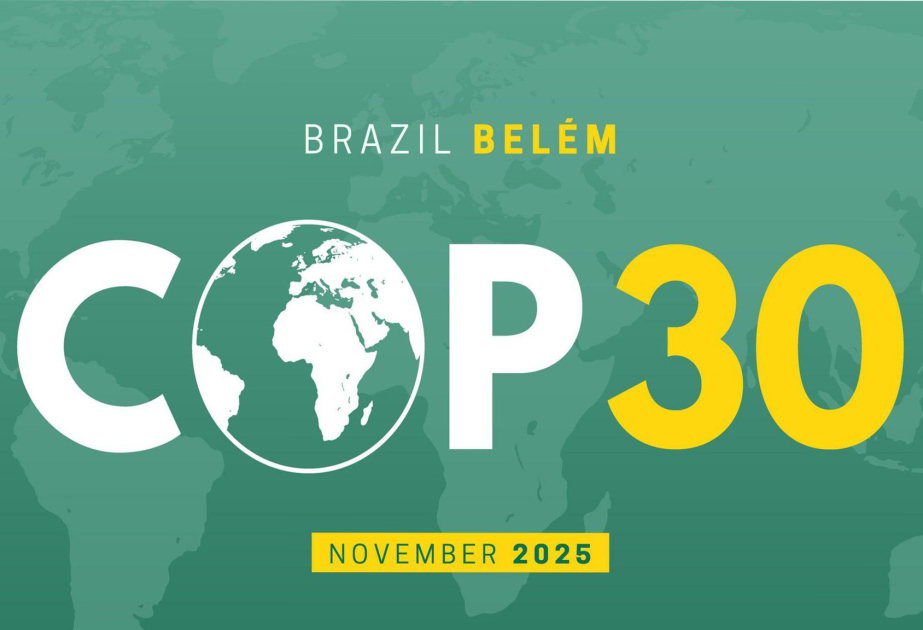

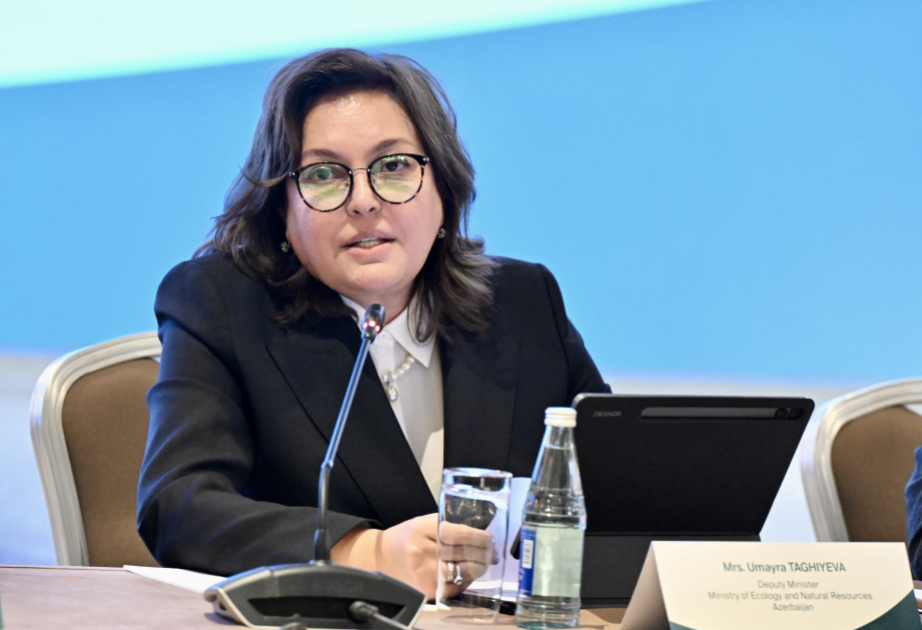
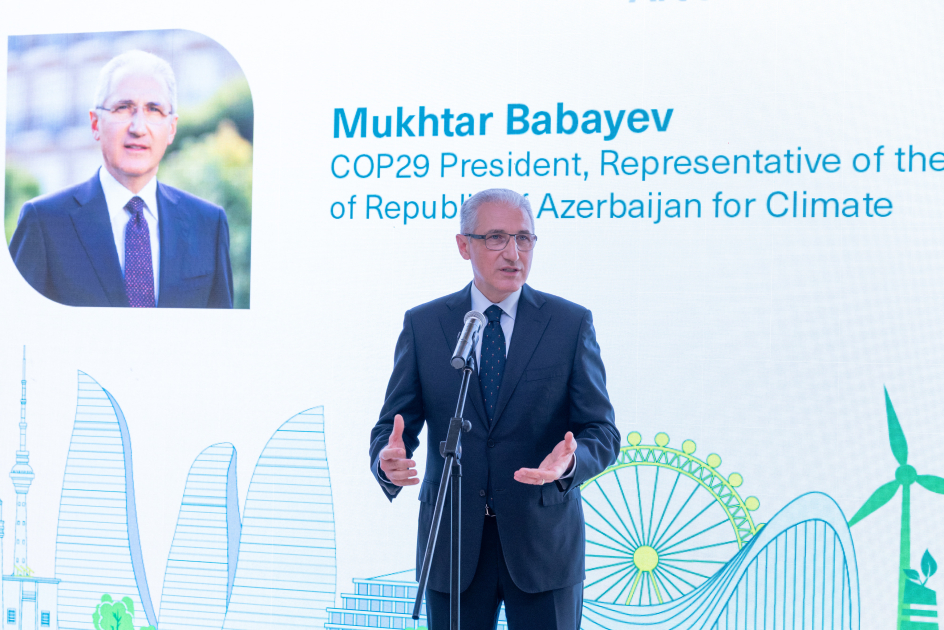
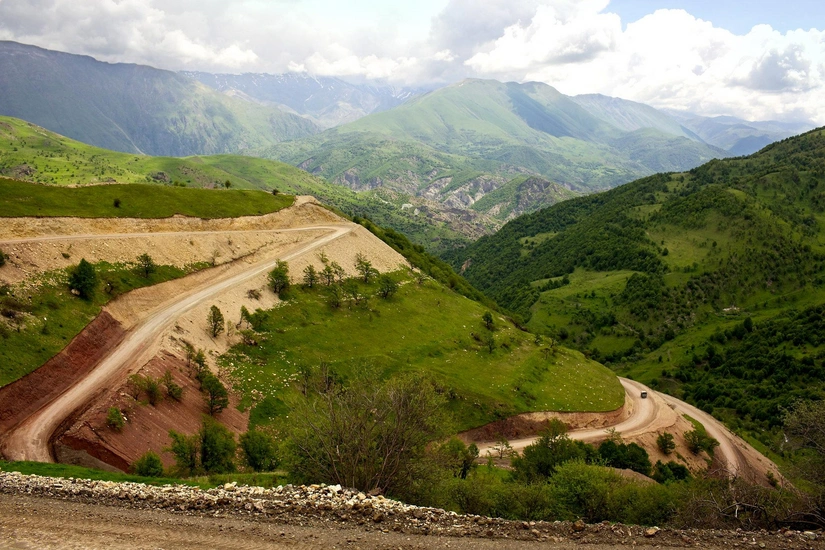
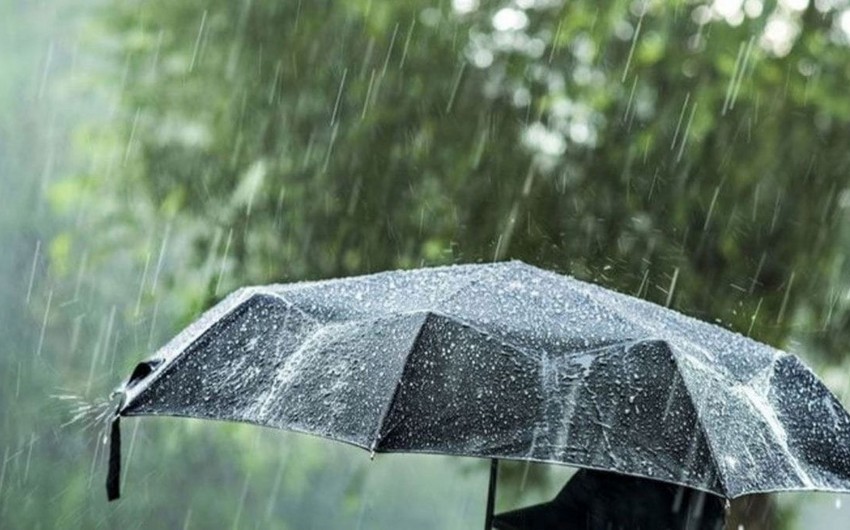
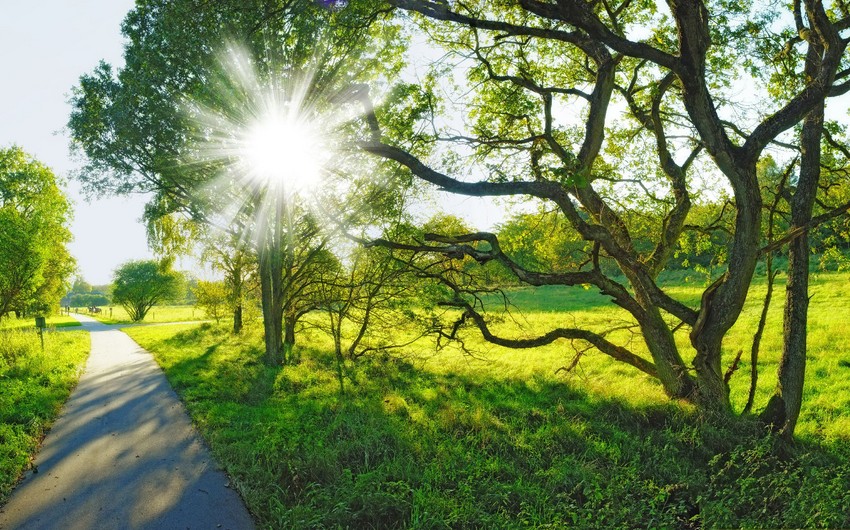
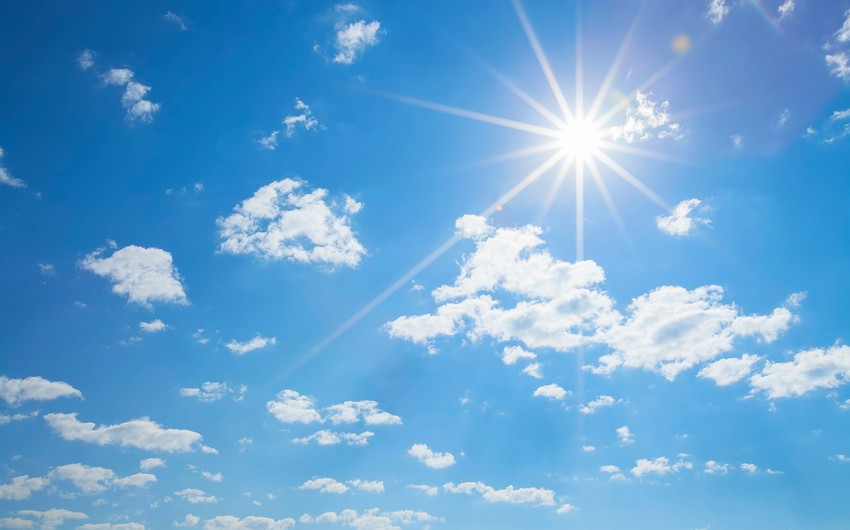



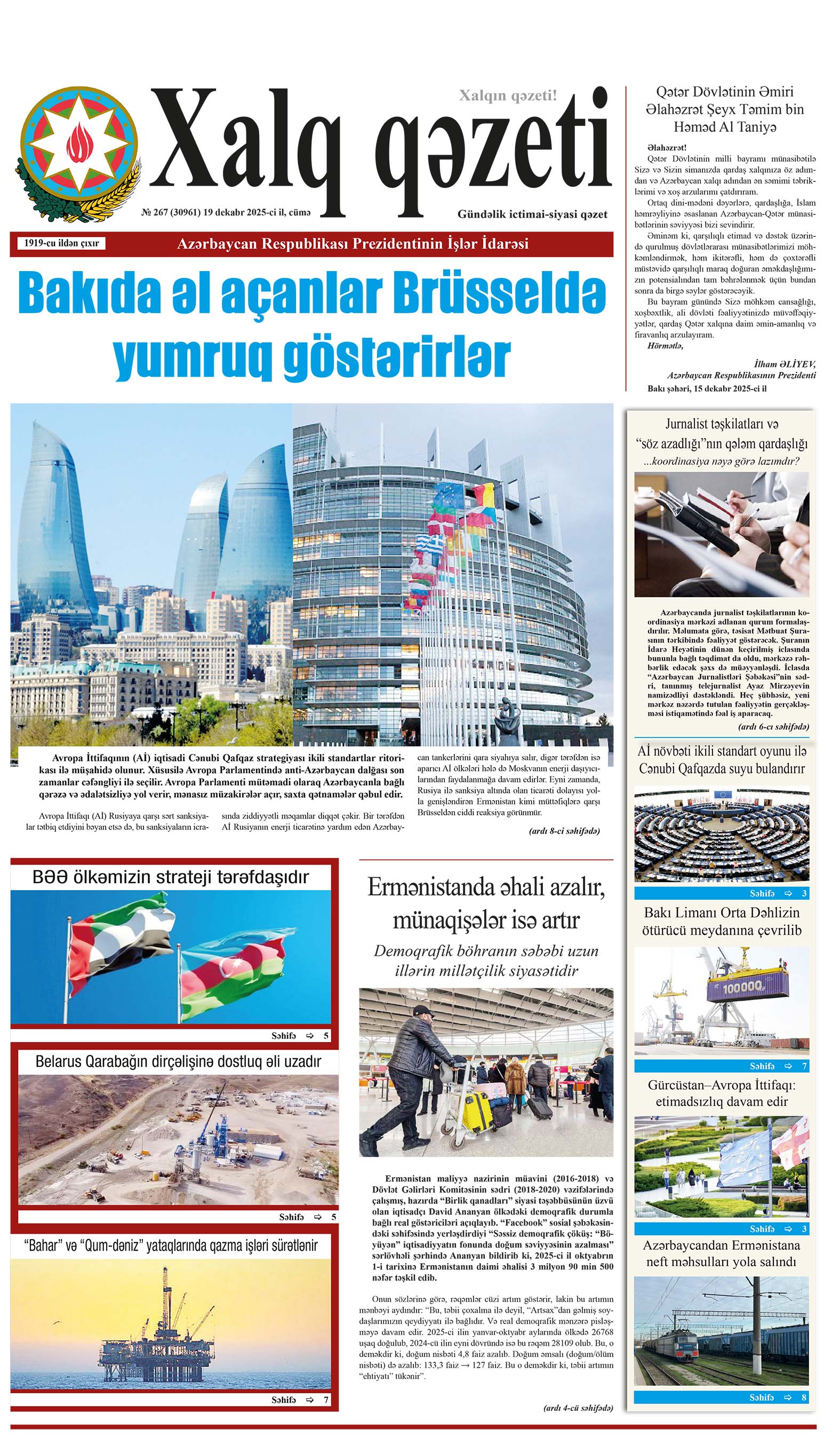
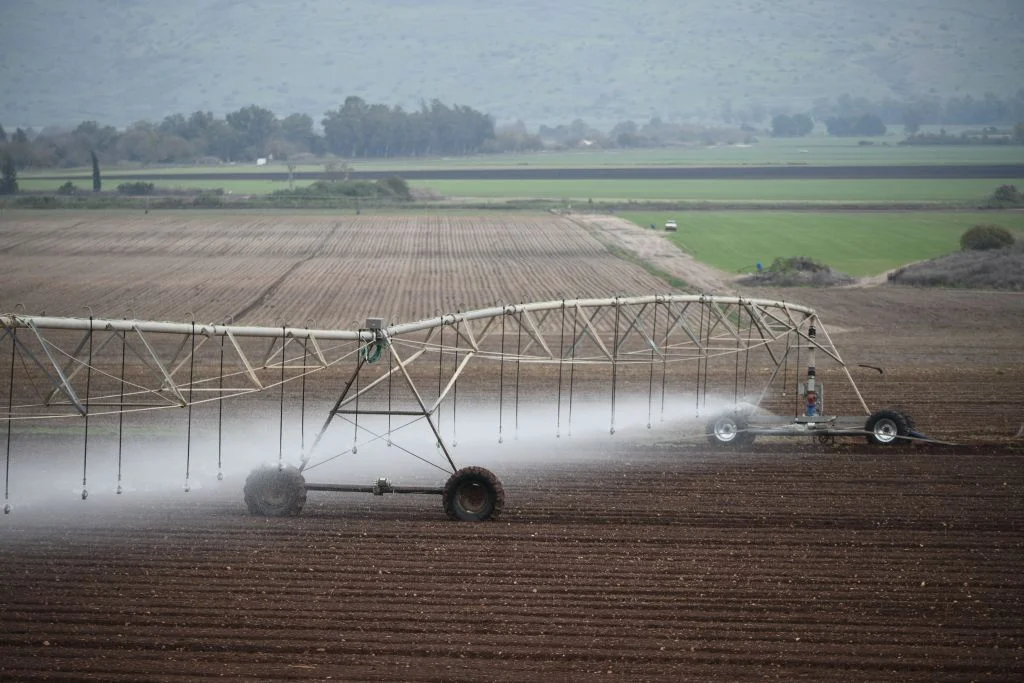
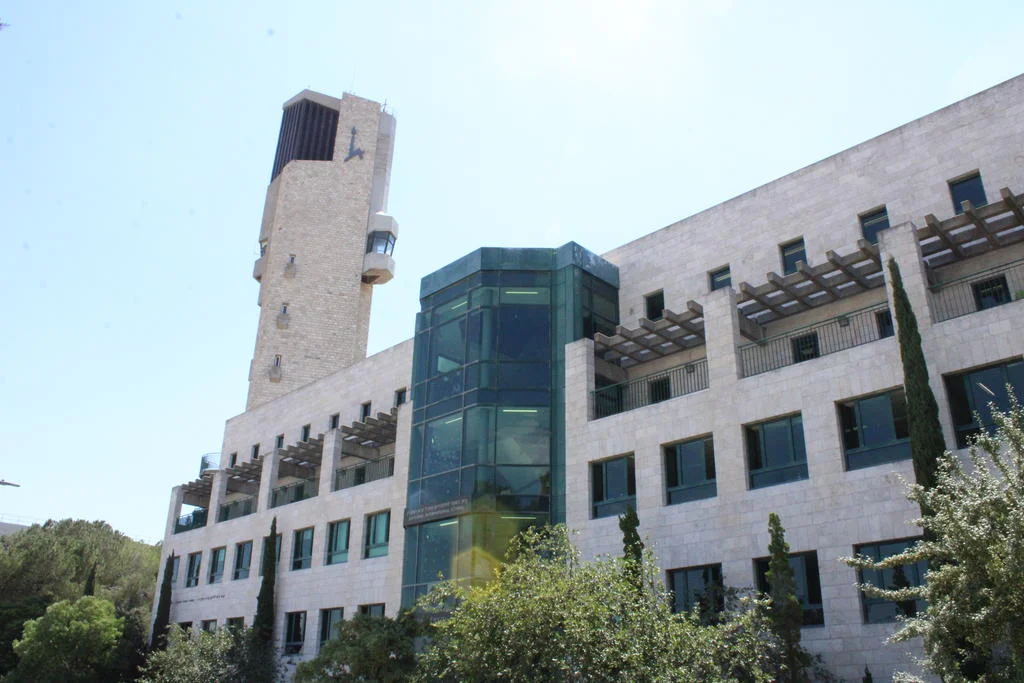
.webp)

